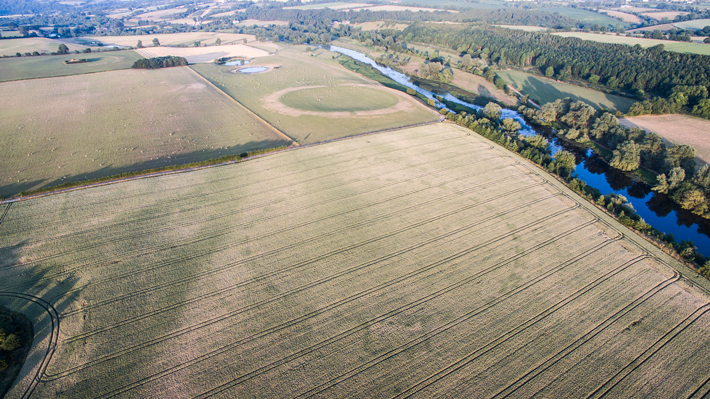(Anthony Murphy)
Brú na Bóinne, or the Palace of the Boyne, on Ireland’s east coast, features an astounding concentration of prehistoric monuments. More than 90 are known in all, and summer 2018’s scorching weather has added yet another—only traces of which were seen in a previous lidar survey. Located just north of the River Boyne, the new monument dates to 2900–2500 B.C. and became visible in pits, postholes, and sections of ditch.
The monument, which likely served as a site for rituals, features a circular double ditch broken up into sections. The entire complex is surrounded by a double ring of timber posts. “The posts may have been connected in some way to create a wall or fence,” says archaeologist Stephen Davis of University College Dublin. Sectioned ditches are nearly unknown in the late Neolithic, according to Davis, and while double rings of posts dating to the period have been found in Scotland, they had never before been found in Ireland. A box-shaped structure on the monument’s western side once had particularly large posts, and may have served as an entrance. Davis notes that the newly discovered monument probably had some relationship to another one just to its southeast, which also appeared this summer as a wide, desiccated ring marking what was once an earthen or stone bank.
Read the rest of this article...

No comments:
Post a Comment
Note: Only a member of this blog may post a comment.